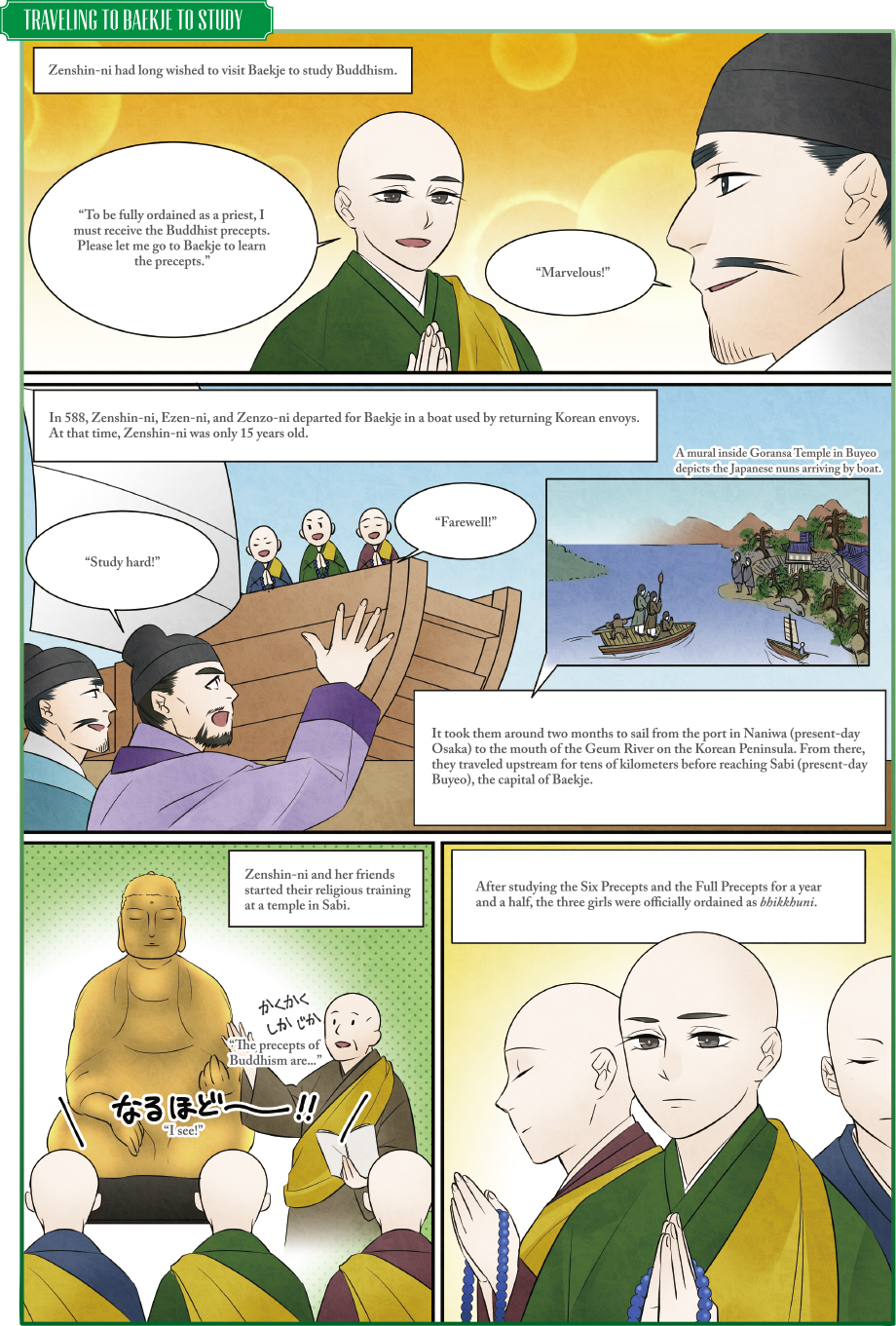Zenshin-ni’s voyage predates that of the first Japanese envoy to Sui China by more than a decade. Fearless pioneers devoted to their mission.
Becoming fully ordained so they could foster Buddhism in Japan
Jukai (“receiving precepts”) is the process by which individuals are ordained as official members of the Buddhist religion. Those who are ordained undertake to follow the various ethical codes of Buddhism. The official ordination ceremony must be performed by a fully ordained monk or nun. Zenshin-ni and her two colleagues wanted not only to further their own Buddhist learning, but also to train and ordain others in Japan and thereby propagate the religion. So deep was their commitment, they undertook the arduous task of traveling overseas.
Murals depict cultural exchanges with Baekje
At the time the three nuns traveled to the Korea Peninsula, the region comprised three kingdoms: Goguryeo, Silla, and Baekje. Of the three, it was Baekje that had the closest ties to Japan. While reliable contemporary accounts are lacking, historians believe that Goransa Temple was founded in the Baekje kingdom during its final phase (before it fell in 660). The temple is now home to four murals that recall the events that took place during the Baekje era. One of the murals depicts nuns on a boat arriving from Japan. Another depicts a missionary setting out to Japan, bearing Buddhist scriptures and statues. These murals highlight the great importance attached to the religious exchanges between Baekje and Japan.

